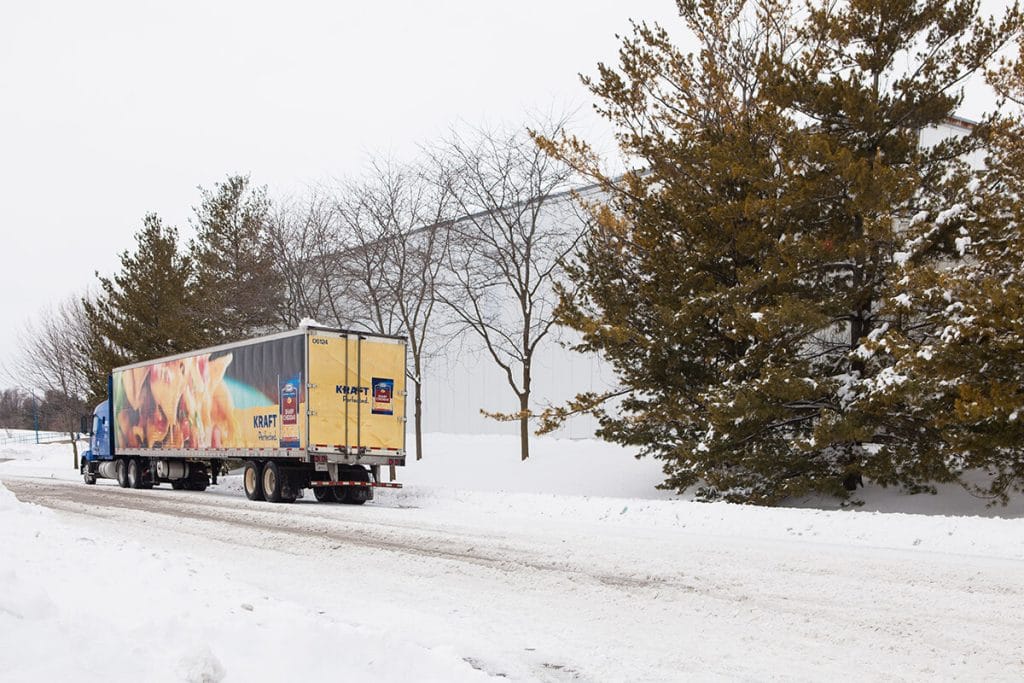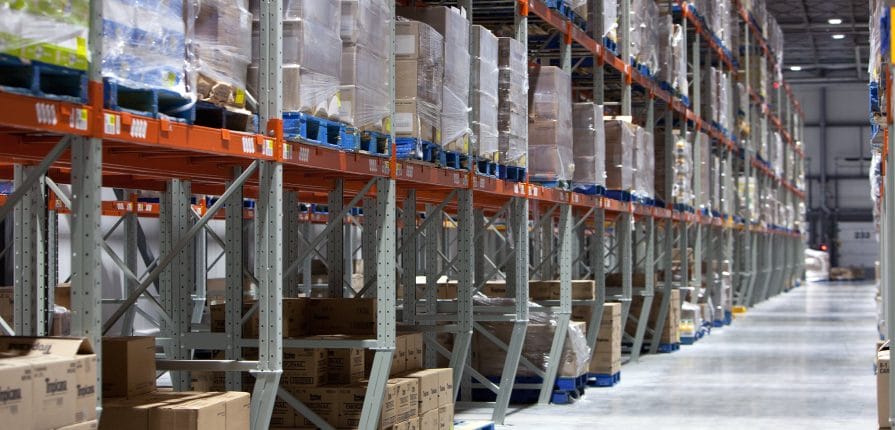Food is one of the very few things in life that we truly can’t live without. It provides us with energy and life and something to bond over. Unfortunately, food has a relatively short shelf life. Our current food production pipeline presents logistical challenges to ensuring food quality. Our food must be able to make it from multiple states away to our doors safely and with the highest possible quality. For solutions, we turn to the food cold chain.
What is the Food Cold Chain?
Before we get into specifics regarding the food cold chain, let’s look at what a cold chain is. Very generically, a cold chain is simply a series of controlled environments that stretches from the point of production to the consumer. Both the fresh foods cold chain and frozen food distribution cold chain utilize the same concepts.
These environments include the point of manufacture, trucks or trains, storage facilities, grocery stores, and your home. You, along with a series of transportation professionals pass products from one environment to the next and on to their final destinations—your home or restaurant.
A well-functioning cold chain will deliver its goods with zero to minimal degradation or change in product quality. It protects the highest standards when it comes to food safety and quality. The cold chain is an absolutely crucial component in protecting our food supply.
Why the Food Cold Chain is so Important
The food cold chain is only important because food spoils. The foods we eat can only be kept at room temperature for a very short amount of time before they begin to spoil and become dangerous to eat. If it didn’t immediately begin to break down into the perfect host for foodborne illness-causing bacteria, we wouldn’t need to slow that breakdown through tightly controlled environments. In reality, food does degrade quickly, and we use the cold chain to keep it fresh.
Since the food that leaves production facilities may not be eaten for days to weeks, producers and shippers go to great lengths to ensure a solid food cold chain. If there’s a break in that chain, a number of negative things can happen.
Spoilage
One thing that can impact the product is spoilage. When food spoils en route to the stores, that product never reaches the shelves. That means all the water and labor that went into its production is wasted. In a world where food insecurity hovers around 10%, ensuring we eat the foods we produce is a healthy practice in sustainability.
Keeping fresh and frozen foods at a stable and safe temperature maintains product quality and prolongs shelf life. Because of the cold chain, food stays good much longer. This helps reduce food waste across the board. Even foods that make it to store shelves only face a 90% chance of making it into consumers’ homes. By prolonging the shelf life of foods, we have more to spread around and possibly put a dent in the hunger statistics.
Food Safety
Even if foods don’t rot, spending too much time in the food safety danger zone (40˚-140˚F) can create problems. In this temperature range, bacteria is able to multiply rapidly, turning otherwise healthy foods into potential dangers. Maintaining proper temps reduces the chance of bacterial contamination and potential sickness.
We practice our own, small food cold chain every time we store our leftover meals for later in the refrigerator or freezer. To keep the leftovers safe, we bring them below 40 degrees sooner rather than later. Perishable foods should generally be eaten within two hours if kept at room temperature, or one hour if the temp is over 90˚. After that, reintroducing it to the cold chain will keep it safe and edible for one more meal.
Food Security
With billion dollar disasters on the rise, a reliable food cold chain infrastructure is crucial to keeping us all connected with the foods we need to sustain healthy lives. Of all the food cold chain benefits, this one may be the biggest.
Investing in cold chain packaging ensures everyone can receive safe and nutritious foods, no matter where on the map they live. Food is a life saving product that relies upon a solid cold chain, but there are some challenges that can cause broken links. It’s important we identify and isolate them quickly when they occur. Let’s look at a few common challenges.

Cold Chain Challenges in the Food Industry
As advanced as systems have become, there are some food cold chain logistics challenges that can quickly turn into quality issues. Even one broken link can do a lot of damage in a relatively short amount of time. Knowing what challenges the industry faces is key to prediction and prevention.
Prolonged Exposure to High Temperatures
The first, and possibly most destructive challenge to the food cold chain is exposure to high temps. The longer that exposure, the more harmful the effects.
It’s perfectly natural for foods to be exposed to a range of temps at certain points along the chain. Delivery drivers must transport goods from the truck to the store coolers and freezers. They introduce foods to higher environmental temperatures for a short while, but make the transition relatively quickly. If foods are left at high temperatures for extended periods, the chances of spoilage and bacterial growth multiplies exponentially.
Damaged Equipment
Another common reason for temperature sensitive foods being exposed to high temperatures is damaged equipment. If the freezers and temperature controlled trucks have broken doors or seals, they are less efficient at maintaining temperatures. That’s why it’s so important for transportation pros to routinely inspect their equipment. A small failure can rapidly turn into significant product loss, or worse, a public health emergency.
Product Monitoring
The quicker we can catch shipping delays or temperature fluctuations, the easier it is for us to remedy the situation. Proper monitoring is the easiest and most reliable way to understand where our shipments are at, both in the world, and on the thermometer.
Proper monitoring helps us to identify fluctuations, but we can greatly reduce their occurrence through packaging. Food packaging allows products to move through the food cold chain safely, no matter what other variables they may encounter.
The Role of Food Packaging in the Cold Chain
The food cold chain can be tough to control completely. There are a number of variables that can negatively impact foods during shipment. For that reason, food packaging plays an important role.
Proper packaging gives the foods we ship the best chance of making it to store shelves safely. Cold chain packaging is designed to stand up to the elements and keep product at the correct temperatures in the face of challenging environments. There are three main methods of packaging foods for the cold chain.
Active Systems
One of the most effective methods of packaging foods for the cold chain is the active system. Active systems use a mechanical method of keeping the contents cold. This involves a mechanical or electrical system powered by an energy source and paired with a thermostatic control.
Think of your refrigerator. You plug it into a power source, set the temperature control knob, and your food is perfectly preserved at a set temperature indefinitely. Active systems operate on this same basic principle, but on a much more mobile scale.
These systems are incredibly accurate and easy to use, but they are more expensive than the alternatives. If the product absolutely must be kept at a stable temperature, active systems are second to none.
Passive Systems
Passive systems operate on a much simpler principle. They’re like a beverage cooler compared to your refrigerator. Instead of a powered mechanical device, your cooler uses ice and ice packs to keep your beverages cold.
Passive systems utilize phase change materials (PCM) such as dry ice or a combination of water and ice. The advantage of using PCMs instead of ice is that they generally maintain a very specific and predictable temperature range. That way, they can keep goods in very cold ranges, but prevent them from freezing.
This is the most affordable option on the list, although it can be hard to use and is less accurate than the other options. But if done right, they can serve your purpose very well at an economical price point.
Hybrid Systems
That brings us to hybrid systems. As you may have guessed, this is a combination of active and passive systems. Like passive systems, hybrid systems use a PCM to keep goods cold during transport. The way they differ is that they incorporate the use of a thermostatic control to provide more temperature accuracy.
Hybrid systems are more expensive than passive systems, but less expensive than active ones. This can be a great option if you want a high degree of accuracy without spending an arm and a leg.
Bolster your Food Cold Chain with Proper Packaging
One of the few variables food producers can control in the food cold chain is packaging. Proper packaging can ensure product stays in safe temperature ranges, no matter what variables are thrown at it. The degree of temperature sensitivity will have a large impact on what type of packaging you need.
If you’re new to cold chain packaging, we can help you make the right choice. We’ve got the products and knowledge to point you in the right direction. Choosing the right materials and using them correctly can make all the difference.

